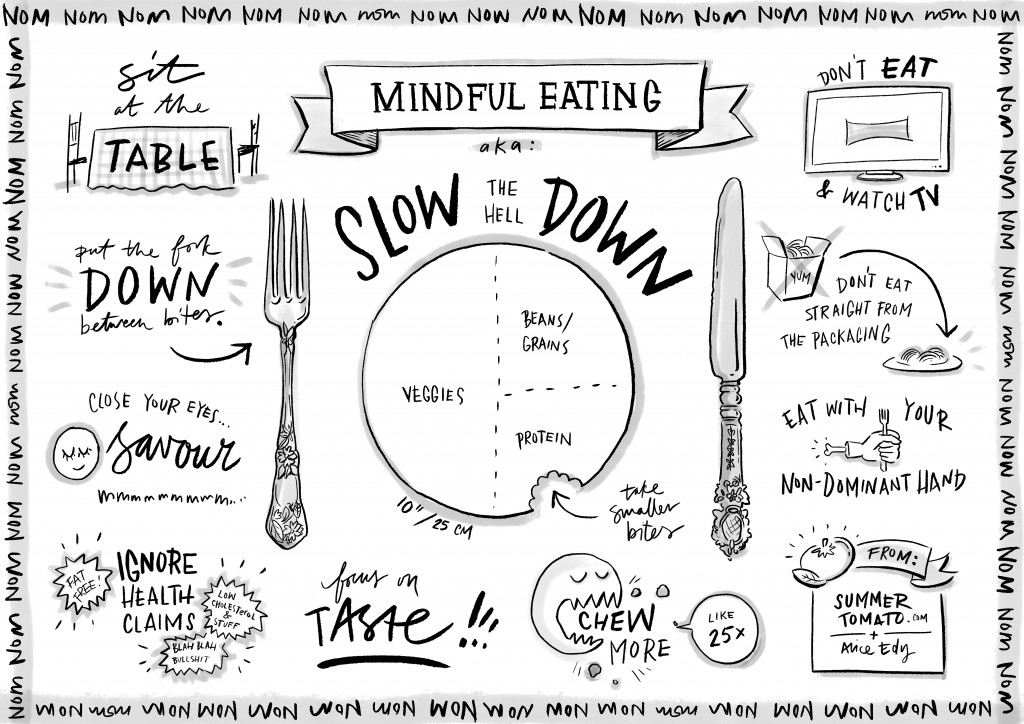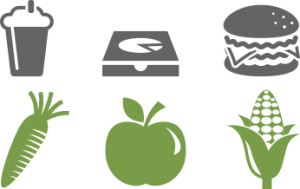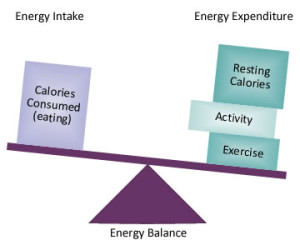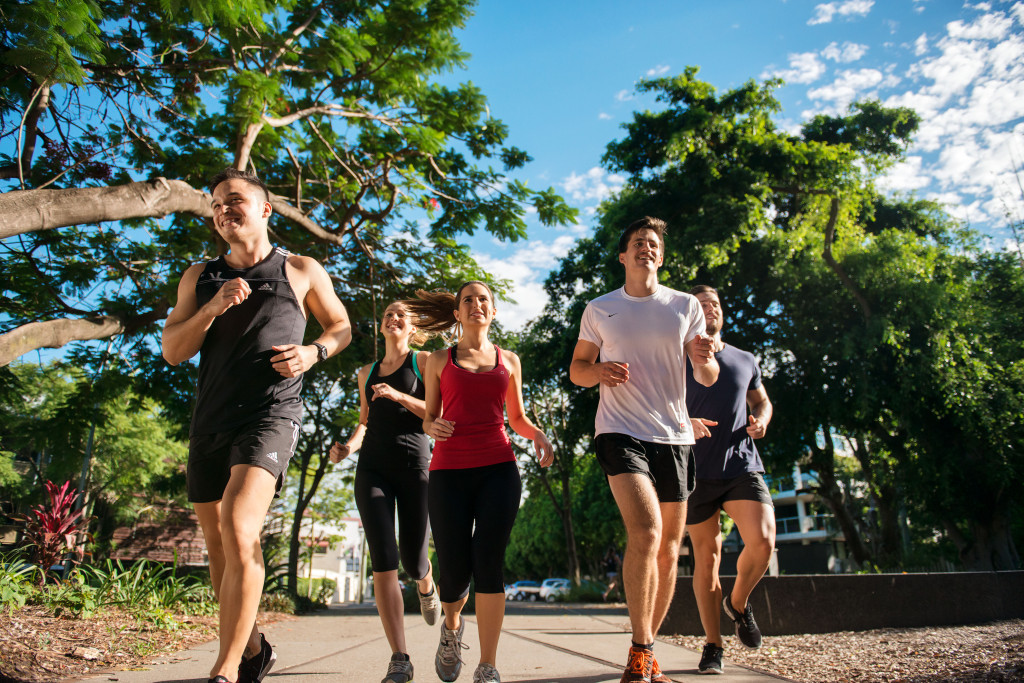
Are you working long hours and often hunched over a computer? Are you racing to and from back-to-back meetings whilst trying not to think about how you will manage the mass amount of emails coming in? Are you feeling stressed and rundown by the increasing demand on employees? As a fellow corporate professional I truly understand how close to home these are working in the corporate world. I have seen firsthand how gradually these detrimental work habits begin to take a toll on our bodies and minds in the form of stress, tension and sickness. Whilst a mild amount of stress can help us meet deadlines, too much or constant stress can have a significant impact on our overall wellbeing. We spend over one-third of our life at work, that’s why it’s so important that we introduce tools early to help us better handle workplace stress and improve our overall wellbeing in the corporate world.
One of these great tools I have found is Yoga. I’m sure you’ve heard of Yoga, but you may be wondering how turning yourself into a pretzel is going to help you in the workplace? Fair question, so let’s break this down.
Why Yoga?
Everyone has different triggers and reactions to stress and in today’s world, stress is inescapable. The good news is you can develop ways to handle stress through Yoga principles. Numerous studies have shown how Yoga can help to counterbalance the body’s physical, mental and emotional reactions to stress. Yoga is more than merely a physical practice and another element of yoga that is becoming increasingly common in the western world is meditation. Yoga not only assists in the daily pressures placed on the physical body, it can also positively affect your mental and emotional wellbeing through meditation and mindful practices.
You don’t have to be an advanced yogi to learn and apply these tools, so let’s have a look at three quick practices you can implement to better handle stress and improve your overall wellbeing in the workplace.
Desk Yoga
It’s not news that we’re all spending more time hunched over our desks creating tight hips and shoulders, a creaky neck and sore back. All the usual consequences of slouching at your desk for 8 hours a day. Sitting for prolonged periods of time can lead to imbalances in your body that cause poor posture and injury down the road. Yoga can help reduce discomfort and target areas of tension, being an effective way to counterbalance common physical ailments.
I’ve suggested 6 quick and effective stretches you can do at your desk in less than 5 minutes. If you need a visual, google these names for the image of the stretch:
• Seated neck stretch
• Wrist stretch and release
• Seated chair twist
• Desk shoulder opener
• Chair hip opener
• Standing forward fold
Taking some time in your workday to perform these quick stretches might just save you a more expensive trip to the physio!
Mindful breaks
In a world where busyness can be perceived as success, taking a lunch break can sometimes be frowned upon. However, what you do in your lunch break can have a huge impact on your productivity for the rest of the day.
Eating at your desk or spending your break aimlessly scrolling through social media can leave you feeling not very refreshed. Productivity reduces, it’s harder to focus and you may need that extra dose of caffeine to get you through.
So maybe step away from your desk and try a few of these:
• Take a walk around the block without looking at your phone. Really notice what’s going on around you and take in the fresh air.
• Eat your lunch mindfully. Take some time to appreciate the flavor and texture rather than rushing to eat while checking social media.
• Practice some mindful meditation in your break, deep breathing and paying attention to how you’re feeling.
Taking a deliberate break from work with a short walk or a bit of mindful relaxation can have powerful effects on our end-of-day concentration, stress, and fatigue.
Meditation
Research on meditation has shown it has many benefits, such as easing stress and anxiety and inducing feelings of tranquility and calmness. While the body needs constant movement to be healthy, the mind thrives with regular doses of stillness.
Our minds like to be busy to help us accomplish tasks, however this can also cause us stress and lack of focus. The good news is, we can train our minds to be calmer and more focused through the practice of meditation. Spending just 5 minutes in meditation can completely change the way you approach life and how your body responds to stress.
More popularly of late, the western world has been referring to ‘Mindfulness Meditation’. Here’s some quick tools as to how you can implement a 5-minute mindfulness meditation in your day. So set an alarm, and let’s get started.
• Find a comfortable position and close your eyes
• Feel which parts of your body connect to the floor
• Draw your attention to your natural breath, becoming aware of the sensation of each inhale and exhale
• Inevitably, your mind may wander, if it does, draw your attention back to the breath
• Notice the sounds around you
• Notice the temperature of the air on your skin
• If your mind gets carried away in thought, return your focus again to the breath
• When you’re 5 minutes concludes, gently open your eyes and notice what’s around you; colours, objects, people
• Pause for a moment and notice how you feel before continuing your day
There you have it, that’s it! Simple, quick and effective.
The practice involves training your mind to focus and be in the present moment without drifting into concerns about the past or future, which is where stress and anxiety can arise. Like any exercise, consistency is key. Give it a try next time you are standing in line, before a meeting, or anytime you need to regroup and have a moment of downtime. With regular practice, mindfulness meditation may also assist you in:
• Remaining calm under pressure
• Improving focus, attention and productivity
• Making decisions from a calm and grounded place
• Re-energise and clear your mind
• Experience less stress and anxiety
• A sense of connection
• Improved sleep
I hope you enjoy these tips on how you can easily implement yogic principles into your corporate day to better handle stress and improve your overall wellbeing. Like everything, start small and be kind to yourself, but most importantly, make a commitment to yourself as changes don’t happen overnight.
Sending calming vibes your way.
Diane Jeays
From Corporate Yogini (@coporate.yogini on Instagram)

Mindful Eating – I’m sure you’ve heard the term, but do you feel like you’ve really grasped the concept? These days the term ‘Mindful Eating’ has somehow found its way into diet and weight loss programs around the world. Yet using mindful eating as as weight loss tool actually goes against what the practice of what mindful eating is truly about. Let’s break this down.
So what is Mindfulness?
Mindfulness is all about deliberately paying attention, non – judgmentally to your thoughts, emotions and physical sensations in the present moment. It’is purpose is to help free yourself of reactive, habitual patterns of thinking, feeling and acting. It is about balance, choice, wisdom and acceptance of what is.
Ok, so how does Mindful Eating fit in?
Mindful eating involves the act of non-judgmentally acknowledging your hunger and fullness cues to guide your decisions of when to begin and finish eating foods, and eating with awareness of all of your senses – sight, sound, touch, taste and smell. It helps to develop non-judgemental responses to food (likes, dislikes, neutral) while allowing yourself to become aware of the positive and nurturing opportunities available through food selection and preparation. It is a tool to learn which foods will best satisfy your hunger.
Why is it not for weight loss?
As you can see, the core purpose of mindful eating is to eat without judgement guided by your internal hunger and fullness cues. Practicing mindful eating with the intention to lose weight means that you are entering the eating occasion with expectation and judgement – to lose weight. If those expectations aren’t met, generally feelings of failure arise – which more often than not lead back to partaking in another behaviour for weight loss – which is a classic example of the diet cycle.
So how can Mindful eating help?
Eating is a behaviour and behaviour change is hard! You can follow a meal plan or pay someone to dictate to you what to eat until they are blue in the face, but at the end of day you have to learn to eat for YOU. Improving your eating behaviours is not about weighing less for a moment in time, but about learning to eat well for the rest of your life. Mindful eating can assist this in this in a number of ways:
• Reconnecting with internal physical hunger and fullness cues: We were all born with the ability to regulate our hunger and fullness internally, but as we get older and life gets busier these cues get interrupted by our environment (i.e. increased stress, working shift work, designated eating times, being preoccupied with work,). By bringing awareness to your body’s sensations around hunger and fullness, mindful eating can help you reconnect with this innate ability we are all born with.
• Reduce Non – Hungry Eating: As natural cues to hunger and fullness are explored mindful eating can help you to identify any instances of non hungry eating (i.e. eating because you are bored, stressed, depressed, lonely, procrastinating or just because it is there). Recognising these occasions is the first step to behaviour change and allows you to explore other remedies for non-hungry eating than food.
• Reduce Overeating: Awareness during eating is also key to mindfulness practice. Combined with hunger-fullness awareness this allows us to notice when a food ceases to be as palatable or as enjoyable, helping to determine when satisfaction has been reached. This is called the ‘Law of Diminishing Pleasure’.
• Increase confidence around foods we feel powerless around: We all have them, those foods that we don’t keep in the house because we don’t trust ourselves around them. Avoidance is a short term solution but long term it’s important to feel confident that you can be around certain foods without going crazy. When eating for ‘pleasure’ over ‘fuel’ – which is totally ok to do, practicing mindful eating can help us to determine when our pleasure/sensory needs have been fulfilled. For example you may buy a chocolate bar because you genuinely feel like it – in the past you might eat the whole bar because it is there, using mindful eating you may find that just half the bar satisfies you – or you may not! Only you can determine this.
How can I be a more a mindful eater? Here are 5 ways you can start with now:
- Write a definition of your hunger as if you were to put it in a dictionary- i.e. I feel… an empty feeling, gnawing and… fatigued, moody.
- Keep a hunger diary- Note down times you get hungry and any relevant circumstances around your hunger. Are you hungrier on days you exercise? Or perhaps days you have a larger workload? Less hungry on days you are stressed? Identifying patterns can help you to pack, prepare and choose foods that are more likely to satisfy your hunger.
- Give your hunger and fullness a score / 10- this is best practiced around meals you feel your overeat at (See scale below). Try to identify how much you need to stay in the comfort zone (i.e not getting so hungry you bite someone’s head off, and not getting so full that you feel unwell).
- Eat without distractions- Turn off the TV and put down the phone. Save your attention for the eating experience!
- Be curious with food, even if you have had it a million times- Before taking the first bite, ask yourself; What is the colour, texture and shape of your food like? Does it feel warm, cold or neutral? What does it smell like? Does it smell as you expected? Do different parts of it look, feel or smell different? Take a bite, but don’t chew yet! Is it cold, warm or hot on your tongue? How does the texture feel? Is it soft, smooth, dry or hard? Is it a combination? Chew slowly…How does it taste? Is is sweet, salty, or a mixture of both? Does the texture change as you chew? Does the flavour change as you chew? How does it feel on your tongue as you move it around your mouth? Now swallow…Has the taste changed again? Are there bits in your teeth? What is the aftertaste like? How is it similar or different from your first chew? Do you need more or are you satisfied?
I hope you enjoy these tips on mindful eating and remember – mindful eating is about eating without judgement and is a skill that takes practice. Start small – if you can only practise mindfulness at one meal this week that’s ok, be patient with yourself – remember behaviour change is hard.
For more on mindful eating, why not visit the Centre for Mindful Eating at www.tcme.org
Serena Sullivan
I: @gathernutrition
F: Gather Nutrition and Dietetics
W: www.gathernutritionaustralia.com

I’m all for people starting small on their health goals, and gradually building to bigger things. Whether they are starting with smaller goals, or starting on smaller day in and day out habits, it all helps. Something is better than nothing right? However, are you someone that has made smaller changes in your exercise and eating patterns in order to lose weight, but still feel like you are going nowhere? This post may be for you.
Let’s start with some common small changes people make to help achieve weight loss goals:
– Drinking low fat milk instead of full cream milk
– Swapping sugar for stevia/sweetener in your coffee
– Eating only wholegrain versions of different foods (i.e. Brown rice, or multigrain bread)
Whilst changing certain habits each day may help, too often people are caught up in the minor changes, and not focusing enough time on the major things that would be most beneficial. This is what I call ‘majoring in the minors’.
Solely changing to low fat milk or eating more wholegrain foods isn’t going to make a difference if you are not eating less calories overall. The energy balance equation is what matters:

If you consume more than your maintenance calories each day (regardless of milk type, or whether wholegrain or not), you will put on weight. If you consume less, you will lose weight. So how do you measure your food intake? Track your food intake with an app like My Fitness Pal (as spoken about on a previous post here).
Needless to say, I still recommend that 80-90% of your food intake comes from whole and minimally refined foods for health reasons, and wholegrain foods are an important component in your diet due to their fiber content. But overeating is overeating regardless of the food type, so remember to keep focused on major changes such as controlling your overall food intake and overall activity level rather than minor changes, and I assure you this will make a bigger difference.
For specific nutrition coaching plans, feel free to email me on james@js-pt.com.au for any enquiries.

Before your holidays you were determined to keep exercising and eating well despite the inevitable blow out days that the end of December and start of January brings.
You had every intention of feeling great once you returned from your holidays because you had read my previous blog post of how to get through the Christmas and New Year period guilt free.
You’ve returned from your holidays and quite frankly you feel terrible because you did none of the above.
Sounds like you? You’re not alone!
Many of my clients, friends, family members, and fellow gym goers have developed a guilty conscious thinking back of their holidays. Some are doing something about it, some aren’t, but many still feel guilty to a certain extent. But now it’s time to move on. If anything, a break from training and/or food tracking may have given you some much needed time off for you to refresh the batteries. And while you think you may have put on a copious amount of body fat, you really haven’t. It’s only been 2 or 3 weeks, not enough to completely ruin your body! The time spent with family and friends with the enjoyment of different food and drinks is something to cherish, not remembered with guilt over your nutrition choices that day.
Now it’s time to focus on the now and the future. Remember the goals you were working towards, or refocus your mind on some new goals for 2015, and just get started in some way, shape or form. Put behind you whatever guilt you may have. Having your mind right and thinking about the positive rather than the past or the negative is crucial for achievement and fulfilment. Without that, you won’t succeed.
I hope everyone had a fantastic holiday, now be the best you can be in 2015!

“Clean Eating”… hands down the biggest buzz phrase in the health and fitness industry for the last couple of years, but what does it mean exactly?
Clean eating is defined by eating only the ‘good’, and healthiest of foods whilst elimnating the ‘bad’ foods, which are also known as the ‘dirty’ foods. So eat your fruits and vegetables, but stay away from sugar, and processed foods. Sounds ok in theory right? Well here’s what’s wrong with labeling foods good and bad.
All calories, regardless of what form they come from, are energy. Fruits and vegetables provide a number of vitamins, minerals and fibre, are low in calories per serve (which is known as being nutrient dense) and also provide energy. Most people can do with eating more fruits and vegetables.
Chocolate on the other hand is much more calorie dense (meaning it has a high amount of calories per serve) and also provides a quick burst of energy. What else does it offer though? Enjoyment. Something a diet high in “clean foods” through eating restrictions can lack.
I’m not saying it’s not important to eat healthy foods such as fruit and vegetables, it is vital. But to not include selected foods and label them as ‘bad’ and restricting yourself the satisfaction of eating foods you enjoy (in moderation) could lead to an unhealthy relationship with your diet, not to mention heightened stress levels. Remember what I said above, all food is energy. Meet your energy demands by building the majority of your diet with whole and minimally refined nutrient dense foods, but also allow yourself the flexibility and freedom to eat foods not necessarily regarded as ‘clean’ as well. Therefore your diet includes a wide variety of food types and nutrients, and your not restricted in any way, such as when you’re at a social outing. Everything in moderation. This way, whatever eating plan you are on is easily sustained without being a mental challenge, is well balanced, and satisfies your taste buds!

Superior Fruit Graceville
I’m sure many of you are familiar with, have seen or have heard of the glycemic index (GI). You know, those commercials and food labels that tell you why a particular food is more healthy because it is ‘low GI’. In short, the GI is a measure of how quickly a given food can raise blood sugar. The test is done solely on a specific carbohydrate food with a score between 1-100.
High GI foods such as sugar, white potatoes, cereal etc raise blood sugar more quickly, thus are scored higher. Low GI foods such as whole grains, nuts and vegetables do not cause the same rises in blood sugar, so are scored lower… But, do all the meals we consume only consist of high GI foods, or low GI foods? No. They are often a mix of both.
Consuming a high GI food (for example white potatoes) as part of a mixed meal of lower GI foods (vegetables, legumes) with a lean protein, would more than likely mean the overall GI of the meal is quite low. The vegetables and legumes in this case may slow the digestion of the white potatoes.
What does this mean for you?
Well, while you may see a lot of marketing to do with high GI and low GI foods, or have heard of people cutting out potatoes because of their GI score, just remember the GI index should not govern someone’s carbohydrate choices exclusively. Many different types of food both low and high GI have a wide range of vitamins and minerals which can benefit your health.
Eat a variety of whole and minimally processed foods and enjoy what is on your plate!
The best diets are the ones that consume all sorts of nutrients, as well as improve the performance, body composition (the amount of lean mass and fat mass present; basically how you look) and health of that individual.
To have a diet which contains all types of nutrients, you need to have VARIETY! Eating the same things each day, even if they are considered ‘good’ foods, means you are likely deficient in other areas of your nutrition.
Eat for your own health, your own performance, and your own body composition, but do yourself the favour and achieve all of that by eating a wide range of foods.
“Variety is the spice of life”

Because of my profession, when I’m partaking in activities that aren’t considered “healthy” such as having a few drinks or eating certain types of food, I’m occasionally questioned from someone. As it happened this week when I was overheard talking about having a few beers early Saturday morning for the Socceroos game, I thought I’d make this point:
Health goes beyond food and exercising. A good social life, building and maintaining quality relationships and a positive mental attitude are also vital cogs in the machine that is optimal health. So if you miss your home cooked meal sometimes to instead be with friends or family to go out, don’t worry about it.
Eating all types of foods from chicken breast to ice cream, or consuming alcohol in moderation is fine as well if your overall nutrient needs are being met. “Clean eating” isn’t something that needs to be done 24/7 to be considered healthy.
I will go out for drinks with friends and I will eat what I want, when I want, but I know myself that I meet my nutritional and exercise needs none the less. Be smart, be flexible, and be a good friend/partner and you can enjoy foods which are often vilified without it affecting your health, as well as maintaining and building the relationships that matter to you.







